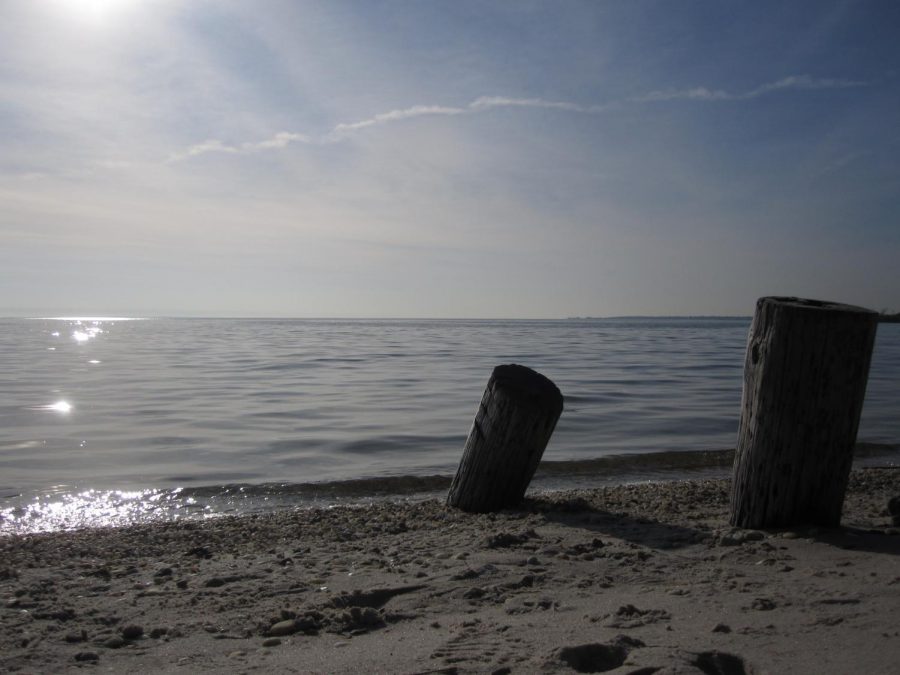Who Needs Clear Water?
Long Islanders May Not Have a Choice
Over the course of the last six years, Long Island natives have becoming increasingly familiar with a no-longer rare occurrence in the waters of the Great South Bay: brown tide. Although it appears exactly as if sounds, brown tide is much more complicated than just the discoloration of our local Bay.
Brown tide, also known as algae blooms, first appeared in the mid-1980s. In simplistic terms, these blooms occur when algae colonies grow far beyond the ecosystem’s carrying capacity for that particular plant. Unlike most algae, which is large enough to be seen with the naked eye, the algae involved in brown tide, known as phytoplankton, is only visible individually on the molecular level. When this algae is placed in the right conditions, its rate of reproduction is large enough for millions of these organisms to be produced, allowing the natural color of these phytoplankton, a brownish-yellow, to be seen in the colonies that lie in bodies of water. But how exactly is this harmful? The answer lies in how these organisms obtain food, through the process known as photosynthesis.
Most people have a basic understanding of photosynthesis, in which plants use carbon dioxide and water to create glucose (energy), emitting oxygen as a byproduct. Yet, what most people don’t know is that this particular process of photosynthesis only occurs when plants are in light, as the lights acts as a catalyst for the leaves to start this reaction. When plants are not exposed to light, they use oxygen as an energy source and release carbon dioxide and other chemical byproducts, some of which can be toxic. Humans never have to worry about competing for oxygen though, as individual plants use very little. However, in terms of algae blooms, large groups of phytoplankton can consume so much oxygen collectively that they oxygenate the water they are grown in, as well s release chemicals such as saxitoxin. Saxitoxin, a dangerous neurotoxin that can destroy nerve tissue, can then be consumed by fish and other organisms and end up concentrated in the body tissues of these shellfish, making them very dangerous for human consumption and, in worst cases, kill populations of fish.
What does this mean for Long Island, and particularly the Great South Bay? Where the Great Say Bay was once known for its abundance of clams, this six-year streak of brown tide has diminished clam populations. Not only has this caused local fisherman and wharfs to struggle, but it is also worsening the condition of the bay water, as clams are notorious for filtering water. Without these claims, the Long Island economy begins to suffer and bodies of water become cloudy and dark. Yet, despite the increase in algae blooms annually, authorities say that hope is not lost. When combating these algae blooms, scientists at Stony Brook University have claimed that attacking the algae before it can bloom is the best method. The whole reason behind the increasing growth of these colonies in the high nitrogen levels in the bay water, which promotes grow and allows the colonies to grow. This nitrogen is a result of runoff from fertilizer. Basically, the fertilizer that many native Long Islanders use on their lawns is also fertilizing the algae that grow in the water. But does this mean sacrificing beautiful, green lawns for the preservation of the Great South Bay? Not exactly.
According to officials, there are steps that can be taken before the nitrogen enters the bay. By creating areas in water outlets where nitrogen-consuming plants can grow, nitrogen from fertilizer runoff can be consumed by algae. Yet, like most problems in life, when one falls another rises. The implementation of these nitrogen-consuming plants, such as duckweed, means that these plants, which thrive off of the chemical, will begin to grow as rapidly as the algae. This could indirectly block sunlight from reaching organisms on the ocean floor, harming other organisms. To prevent this, duckweed plants would need to be placed in small, controlled groups, and be maintained by officials of their respective towns. Until the funding for these projects can be acquired consistent enough for regular maintenance, the brown tide issue will remain the main antagonist against the waters surrounding Long Island. Otherwise, Long Island residents might have to give up using chemical based fertilizers in their gardens and on their lawns. Either way, water of grass, somethings will be turning up brown next Spring.
Your donation will support the student journalists of Lindenhurst Senior High School. Your contribution will allow us to purchase equipment and cover our annual website hosting costs.





